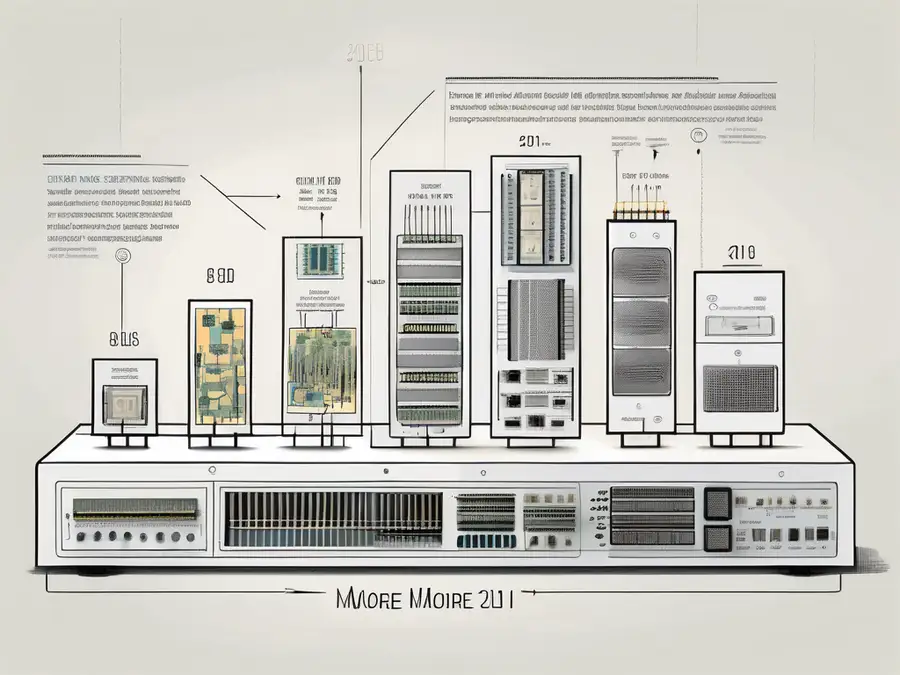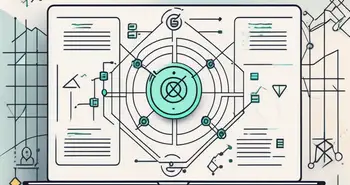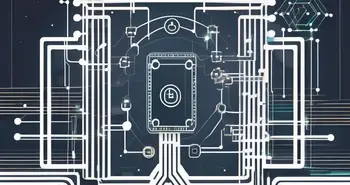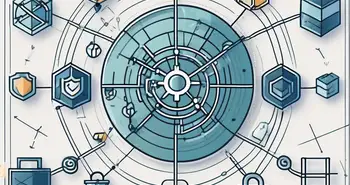The Evolution of Moore’s Law: A Breakthrough in Technological Advancement

As an expert in the field of technology, I am excited to delve into the incredible journey of Moore's Law and its impact on the world of computing. By understanding the origins, developments, and limitations of this fundamental principle, we can truly appreciate the profound effect it has had on the advancement of our digital age. So, let's explore the evolution of Moore's Law and its role in revolutionizing technology as we know it.
Understanding Moore's Law
Before we embark on this exploration, it is essential to grasp the basic premise of Moore's Law. Coined by the visionary Gordon E. Moore, this law states that the number of transistors on integrated circuits doubles approximately every two years. In simpler terms, it means that the computing power of our devices will exponentially increase while their size decreases. This phenomenon has been the driving force behind the rapid progress in technology we've witnessed over the past several decades.
The Basic Premise of Moore's Law
At its core, Moore's Law hinges on the principle of innovation and the relentless pursuit of miniaturization. By squeezing more transistors onto a computer chip, technology companies have been able to pack increased processing power into smaller spaces. This, in turn, has given rise to more powerful computers, smartphones, and countless other devices that have become integral to our daily lives. The law has not only transformed the way we live and work but has also shaped entire industries, such as the semiconductor industry.
Historical Context of Moore's Law
Let's take a step back and examine the historical context within which Moore's Law emerged. In 1965, Gordon Moore, the co-founder of Intel, made his groundbreaking observation that the number of transistors on an integrated circuit was doubling every year. He later revised this prediction to every two years, which has held true for decades. This insight was not only visionary but also provided a roadmap for the future of technology.
The Evolution of Moore's Law Over Time
Now, let's dive into the evolution of Moore's Law and its fascinating journey through time.
Early Developments and Predictions
During the early years, Moore's Law found validation as major technology companies embraced its principles and fueled innovation. The introduction of the first computer microprocessors marked a significant milestone. With each passing year, we saw improved chips that revolutionized the computing landscape.
Furthermore, the predictions made by Gordon Moore himself proved astonishingly accurate. His foresight not only inspired technology pioneers to push the boundaries but also set a precedent for the future of technological advancements.
Moore's Law in the Digital Age
The digital age has been dominated by the relentless pace of Moore's Law. From the desktop computers of the 90s to the smartphones and wearable devices we carry today, the exponential growth in computing power has transformed every aspect of our lives.
It is no longer science fiction to carry a device that rivals the processing power of a supercomputer from just a decade ago. This progress has spawned an entire ecosystem of digital innovations, revolutionizing industries such as e-commerce, healthcare, entertainment, and transportation.
The Impact of Moore's Law on Technological Advancement
The impact of Moore's Law on technological advancement cannot be overstated. Its influence can be seen across various domains, revolutionizing computing power, speed, and device miniaturization.
Influence on Computing Power and Speed
Due to Moore's Law, the computing power of devices has soared to unimaginable heights. Complex calculations that once took hours can now be completed in mere seconds. This exponential growth has opened up possibilities for data-intensive applications, such as artificial intelligence, big data analytics, and machine learning.
We are witnessing the integration of cutting-edge technologies, such as virtual reality and augmented reality, which were once only dreams on a distant horizon. All of this is made possible by the remarkable progress facilitated by Moore's Law.
The Role of Moore's Law in Miniaturization of Devices
With every passing year, devices become smaller, sleeker, and more powerful. Moore's Law has been the driving force behind this miniaturization phenomenon. Smartphones that fit in the palm of our hands now possess computing power that once required a room full of machinery.
This miniaturization continues to reshape our lives, enabling us to carry powerful computers in our pockets, wear fitness trackers on our wrists, and even control our homes with a single voice command. The possibilities are endless and continuously expanding, thanks to Moore's Law.
Criticisms and Limitations of Moore's Law
Even the most groundbreaking principles have their limitations, and Moore's Law is no exception. Let's explore some of the criticisms and challenges it faces.
The Question of Sustainability
As the number of transistors approaches atomic scales, the physical limits of Moore's Law are becoming evident. The challenge lies in finding new materials and technologies that can overcome these barriers. Researchers and scientists are diligently working to innovate and explore alternatives to keep the exponential growth of computing power alive.
Technological Challenges and Roadblocks
The miniaturization made possible by Moore's Law has led to unforeseen challenges. Heat dissipation and power consumption have become significant concerns. Overcoming these hurdles requires ingenious engineering and continuous innovation.
The Future of Moore's Law
While the physical boundaries of Moore's Law may pose challenges, the future of technological advancement remains bright. As an expert in the field, I am optimistic about the emerging technologies that will shape the post-Moore's Law era.
Emerging Technologies and Their Implications
Quantum computing, neuromorphic computing, and other groundbreaking technologies show immense promise for the future. These technologies could push the boundaries of computing power, opening new frontiers in fields such as medicine, energy, and communication.
Predictions and Theories for the Future
Experts and theorists have proposed various post-Moore's Law paradigms, including three-dimensional integrated circuits, nanotechnology, and biological computing. The realization of these theories would mark another chapter in the ongoing saga of technological advancement.
As an expert, I have had the privilege of witnessing the impact of Moore's Law firsthand. From my early days as a computer enthusiast to my current role as a technology consultant, I have seen the transformative power of this principle in action.
My personal advice to all technology enthusiasts is to embrace the spirit of innovation and curiosity that Moore's Law has nurtured. Whether you're a student, a professional, or simply someone intrigued by the wonders of technology, never stop exploring. Stay abreast of the latest breakthroughs, challenge conventional wisdom, and dare to dream of a future where the impossible becomes possible.
Frequently Asked Questions
Q: What is Moore's Law?
A: Moore's Law, coined by Gordon Moore, states that the number of transistors on integrated circuits doubles approximately every two years. It highlights the exponential growth in computing power while reducing the size of devices.
Q: How has Moore's Law influenced technological advancement?
A: Moore's Law has been a driving force behind the rapid progress in technology. It has revolutionized computing power, speed, and device miniaturization. It has opened up possibilities for artificial intelligence, data analytics, and emerging technologies.
Q: What are the limitations of Moore's Law?
A: Moore's Law faces challenges regarding sustainability and physical limitations as the number of transistors approaches atomic scales. Technological challenges, such as heat dissipation and power consumption, also pose hurdles.
Q: What does the future hold for Moore's Law?
A: While the physical boundaries of Moore's Law present challenges, emerging technologies like quantum computing and neuromorphic computing show promise for the future. The industry is exploring alternatives, such as three-dimensional integrated circuits and nanotechnology.
By understanding the evolution of Moore's Law, its impact, and its future, we can appreciate the incredible breakthrough it represents in technological advancement. As we move forward, let us embrace the spirit of innovation and explore the limitless possibilities that lie ahead.
As we continue to witness the remarkable evolution of technology, inspired by the principles of Moore's Law, it's clear that innovation doesn't stop at just hardware advancements. In the spirit of this relentless progress, Morpher.com invites you to experience the future of trading. Embrace the cutting-edge of investment technology with a platform that offers zero fees, infinite liquidity, and the freedom to trade across multiple asset classes. Whether you're interested in stocks, cryptocurrencies, or even the exciting world of NFTs, Morpher provides a unique, blockchain-based trading experience that aligns perfectly with the transformative ethos of Moore's Law. Sign Up and Get Your Free Sign Up Bonus today to join the revolution of trading with Morpher, where the future is limitless and the potential for growth mirrors the exponential trajectory of technological advancement.

Disclaimer: All investments involve risk, and the past performance of a security, industry, sector, market, financial product, trading strategy, or individual’s trading does not guarantee future results or returns. Investors are fully responsible for any investment decisions they make. Such decisions should be based solely on an evaluation of their financial circumstances, investment objectives, risk tolerance, and liquidity needs. This post does not constitute investment advice.

Painless trading for everyone
Hundreds of markets all in one place - Apple, Bitcoin, Gold, Watches, NFTs, Sneakers and so much more.

Painless trading for everyone
Hundreds of markets all in one place - Apple, Bitcoin, Gold, Watches, NFTs, Sneakers and so much more.









